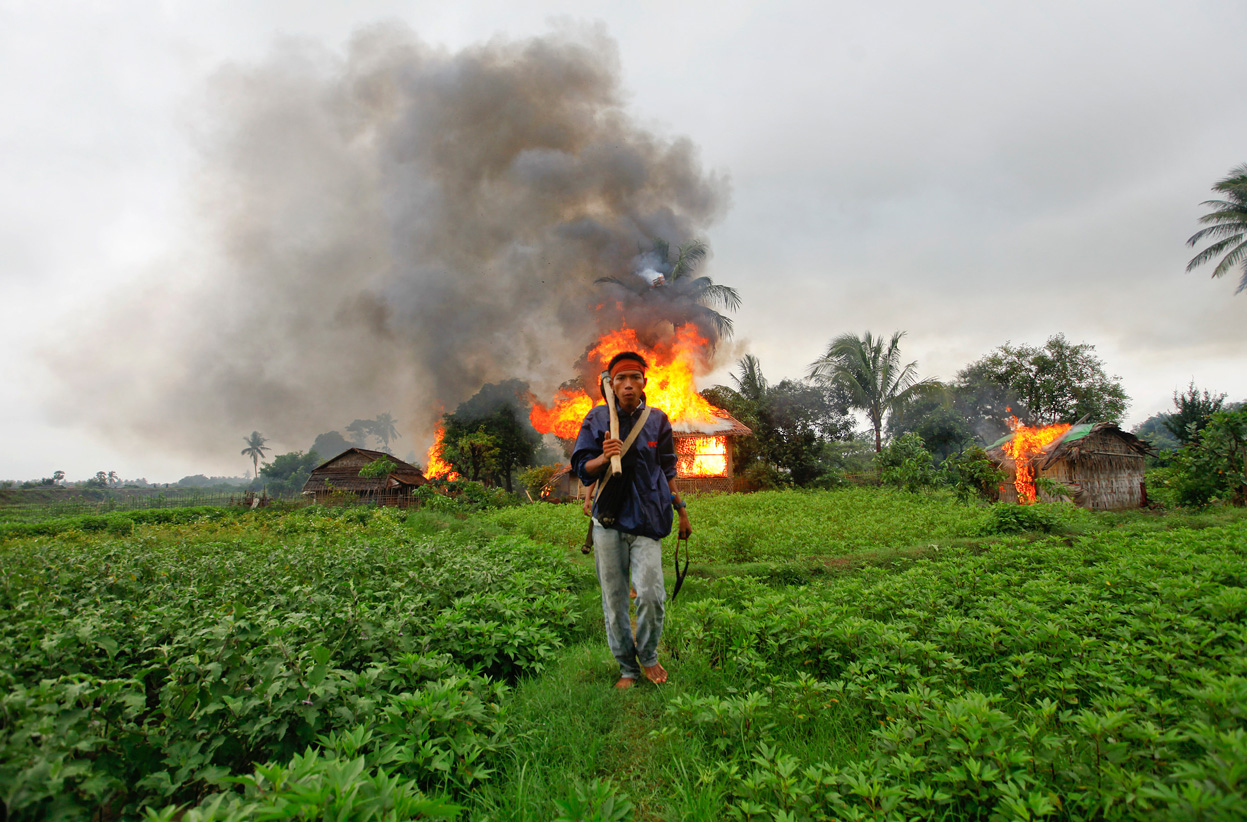
Shortly before July, Time Magazine announced its intention to publish a cover story naming Wirathu, a militant nationalist Burmese monk, “The Face of Buddhist Terror.” Until July, Wirathu was relatively obscure outside Burma, and although most were aware of Burma’s significant ethnic cleansing of Rohingya Muslims, few knew about the virulent and violent proscriptions for the Rohingya propagated by traditionally pacifist Buddhist clerics. Above all, the current situation in Burma demonstrated that religious violence is not dependent on inherent qualities of a religion, but rather those who use it for various political ends.
The Time Magazine article validated several key accusations that human rights organizations have made: first, that violence against Rohingya is institutional and systematic and partly organized by the country’s religious leaders, and second, that there exists key bastions of support for the ultra-nationalist 969 movement inside Burma’s quasi-civilian government. Those familiar with Burmese history would not be surprised; a long-held tenent of the dominant ideology of the post-Panglong-Agreement ruling class has been the construction of an ethnically homogenous nation-state by violence when necessary.
Days before the release of Time Magazine’s coverage of anti-Muslim hate in Buddhist monastic circles, Burmese President Thein Sein issued a Burmese-language-only condemnation of the article. In a nation with one of the lowest internet penetration rates in the world, Wirathu’s followers on social media began a petition to support him which reached 63,000 signatures in two days, and a rarely-seen officially-sanctioned protest took place in Yangon (Rangoon) with hundreds of pro-Wirathu monks and civilians.
On the 13th of July, the United Nations rejected a plan proposed by Thein Sein to resettle the 800,000 unwanted Rohingya abroad. The president of Burma was backed by the Rakhine Nationalities and Development Party, a nationalist organization comitted to the displacement of Rohingya from the state and from Burma as a whole.
July 2013 also saw disturbing developments in border regions which lends evidence to the “preparation” stage of genocide. One of the key steps in preparation for genocide is the generation of “death lists” which entails the documentation of “undesirables” for upcoming efficient extermination. Nasaka, Burma’s border police, attempted to undertake the registration of Rohingya in several locales in Rakhine State. Under the guise of a census, Nasaka agents used torture, kidnapping, and violence to coerce Rohingya to register as “Bengali,” a term that implies the Muslims are illegal immigrants. On July 12, Thein Sein disbanded Nasaka but the Sentinel Project immediately noted human rights violations by the succeeding organizations, namely Rakhine police and security forces, and reported them in ThreatWiki. The announcement to disband the organization may have merely been a ploy by the Burmese government to win praise abroad while maintaining the organization in disguise at home.
Child soldering was also addressed in the month of July with mass releases of underage recruits from the Tatmandaw, or Burmese army. While the releases were internationally praised, the Burmese army still continues to recruit child soldiers to bolster its ranks which are plagued by constant desertion.
Thein Sein has also been forced to react to claims that Burma imprisons citizens on the basis of their beliefs alone, promising to release all prisoners-of-conscience by the end of 2013. On July 17th, the day of the announcement, Amnesty International noted that prisoners of conscience were still being arrested, namely an elderly Rohingya human rights defender named U Kyaw Hla, who was detained and held arbitrarily.1
The month of July witnessed Burma inching towards further ethnic violence, possibly even genocide. An upcoming Risk Assessment by the Sentinel Project, comprising months of intense research by the Situation of Concern team for Burma has revealed just how close the Rohingya have come to the brink of genocide.
